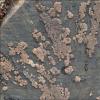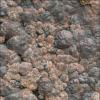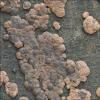
04-01-2026 17:45
 Stephen Martin Mifsud
Stephen Martin Mifsud
I was happy to find these orange asmocyetes which

03-01-2026 13:08
Niek SchrierHi all,We found groups of perithecia on a Lecanora

29-12-2025 17:44
Isabelle CharissouBonjour,J'aimerais savoir si d'autres personnes au

02-01-2026 17:43
MARICEL PATINOHi there, although I couldn't see the fruitbody, I

01-01-2026 18:35
Original loamy soil aside a artificial lake.The co

31-12-2025 19:27
Collected from loamy soil, at waterside (completel
 Hi,
Hi,May be somebody more experienced can help me. Is it possible that these pictures show Kretzschmaria deusta in a not yet mature (black) state? I know only bright whitish-gray anamorph form and completely black stoma. I've never seen something in between. Some pictures of stromatal surface like in
http://mycology.sinica.edu.tw/Xylariaceae/frames.asp?qrySectionName=Kretzschmaria&qryIDString=k004&qryPart=t
may give some hope? Unfortunately I have no pictures of section of stroma or microscopy.
Found on large Fagus sylvatica trunk (cut surface, not on bark)
Thanks for your response.
Amadej
I pressume these are stromata of Annulohypoxylon cohaerens
in my opinion isn't Kretschmaria, but a Hypoxylon (serpens ?).
Greetings Peter.

I would say it is neither Kretzschmaria (definitely) nor Nemania serpens (also definitely). It could well be Annulohypoxylon cohaerens as Enrique says but I would not exclude Hypoxylon spec., e.g. H. fragiforme. In this (quite unripe) stage it is quite difficult to say much without using KOH - the colour of the soluble pigments would help!
Regards from Lothar

Best!
cheers

Hello together,
yes, the papillate ostioli are a clear sign.
But - A. cohaerens and H. fragiforme often grow together and - especially on the front face of lying logs - H. fragiforme and A. cohaerens can look very similar in first appearance at first glance. They commonly grow together there and if they are still unripe and young (without ostioli) it is often quite impossible to say without KOH which one is developing. They also grow together on the bark where A. cohaerens is very common, too, like H. fragiforme on bare wood.
Best regards, Lothar

Warmest regards
Amadej

It is A. cohaerens - the perithecia are papillate (I overlooked this first).
But H. fragiforme (and possibly other Hypoxylon species) can look very similar by first glance.
Best regards from Lothar





